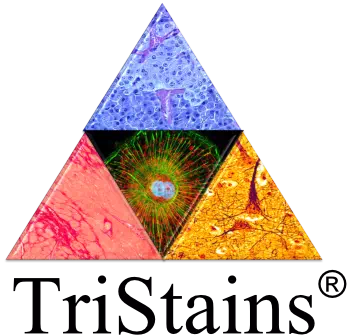Buy Phenosafranine (81-93-6) MF: C18H15ClN4 | MW: 322.79. Get High Quality Phenosafranine (81-93-6) from Tristains.
Phenosafranine exists as a dark green crystalline powder and can be dissolved in water and ethanol to form a red solution. Its chemical formula is C18H15ClN4, and it is also known as Basic Red 2 and Safranine T. This organic chloride salt contains 3,7-diamino-5-phenylphenazin-5-ium as the counterion and has been utilized for nuclear staining, as well as serving as a fluorochrome, histological dye, and photosensitizing agent.
“TriStains”, Histological Stains/Biological Stains that offer range of stains used in Histology, Cytology, Microbiology and Hematology laboratories. TriStains meet the highest quality standards and give excellent color performance of desired components of cells and tissue in life science laboratories. TriStains series products are carefully tested to ensure accurate, reliable, and reproducible results. Our products are available in different packaging sizes to allow you to get all types of stains & Indicators for your specific purposes from a single source.
In-addition Tristains also deals in numerous Laboratory Supplies, Chemicals, Equipment, Instruments, Reagents, Standard Solutions, Buffers, Histological Stains/Biological Stains & Indicators and many more, for more information please visit our website www.tristains.com or email to sales@tristains.com we will be happy to help you. All Tristains Products are exclusively distributed by Dawn Scientific Inc (https://dawnscientific.com)
Application :
- Phenosafranine is used to stain biological tissues and cells, aiding in microscopic examination. It is particularly useful for staining nuclei.
- It can be used in differential staining techniques to distinguish between different types of cells or cellular components.
- It is used to stain bacteria, helping to differentiate between gram-positive and gram-negative bacteria in Gram staining protocols.
- It is also used to stain yeast and fungi for microscopic observation.
- It can be used in studies involving the binding of dyes to DNA, useful in various molecular biology applications.
Benefits :
- Provides clear and vivid staining of biological materials
- Chemically stable and soluble in both water and ethanol
- Ability to differentially stain different types of cells or cellular components


















Reviews
There are no reviews yet.